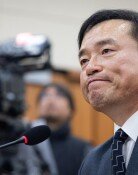Seoul should seek solutions amid Chip 4 alliance
Seoul should seek solutions amid Chip 4 alliance
Posted March. 02, 2023 07:38,
Updated March. 02, 2023 07:38
Since Washington pledged to provide semiconductor subsidies as part of its efforts to set up a U.S.-led supply network system, it has made it harder for businesses to receive financial support with more strings attached. It even requires that excess profits of a particular level be shared with the U.S. government while asking manufacturers to give it open access to sensitive semiconductor facilities. Businesses hesitate to say yes to these unfavorable conditions. Even with the “guardrail” provision in force to ban subsidy recipients from making a new investment in China for 10 years, it adds more complexity to corporate calculations of the gains and losses of investing in the United States.
On Tuesday, the U.S. Department of Commerce released six conditions to receive semiconductor subsidies of 52 billion U.S. dollars according to the CHIPS and Science Act. It announced that businesses winning a more than 150 million-dollar subsidy will be required to share excess profits over a particular threshold with the U.S. government. If businesses open production and research facilities to the U.S. government, they will take priority in Washington’s decisions to determine recipients of subsidies. Part of the burdensome conditions is to prohibit subsidies from being used for stock buybacks or dividend payments and to build childcare facilities.
Washington has gone too far. It is not a reasonable requirement that semiconductor manufacturers, born to be in harsh competition for technological advancement, open the door of their core facilities. It even attempts to intervene in management by looking into company accounting to get excess profits paid. There is even criticism within the country that it is only an unreasonable market intervention that can increase companies’ burden and discourage them from building semiconductor factories. South Korean manufacturers are also reluctant to receive financial help from Washington because it comes at a price.
However, it is not a matter of choice but a necessity to engage in the U.S.-led supply network of semiconductors. After all, the United States rules semiconductor intellectual property rights and the supply network of production equipment and maintains a core security alliance with South Korea. It is not easy for Seoul to turn its back on China because it accounts for 40 percent of the country’s semiconductor exports. Thus, South Korea is supposed to take comprehensive and strategic action as both U.S. subsidies and the Chinese market equally matter.
Individual businesses alone cannot find the right solution. This is where the government should come in showing diplomatic capabilities. It is worth noting that South Korean businesses have made a large investment in the U.S. market to help create jobs. Seoul should actively engage in the “Chip 4 Alliance” and make sure that Washington allows for an extended grace period regarding regulation on equipment and exports. It should raise a unified voice alongside Japan, Taiwan, and other allies if needed. The South Korean government should not forget that South Korean EVs were discriminated against in terms of receiving subsidies following the passage of the Inflation Reduction Act last year. Seoul needs to cooperate with Washington. However, it is equally essential to protest unreasonable requirements and reach a win-win solution in the two countries' mutual interest.



![‘치매머니 사냥’ 요양원의 비극…701호 동생, 702호 아들에 뜯겨[히어로콘텐츠/헌트③-上]](https://dimg.donga.com/c/138/175/90/1/wps/NEWS/IMAGE/2025/12/16/132980393.1.jpg)
![요양원 321곳 중 85곳 “치매발병후 기초수급자 전락 사례 있어”[히어로콘텐츠/헌트③-下]](https://dimg.donga.com/c/138/175/90/1/wps/NEWS/IMAGE/2025/12/16/132980397.1.jpg)


